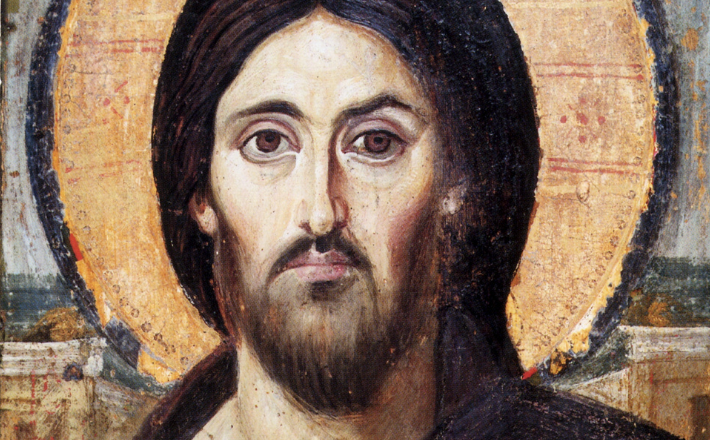Commentary on Revelation 7:9-17
To enter the book of Revelation is to step into a “meandering river,” as Lynn R. Huber suggests in the Wisdom Commentary Series. With all the numbers—seven messages, seven seals, seven trumpets, seven plagues—there seems to be some sense of order or progress being made in the narrative. But these numerical series are often interrupted by other images or scenes (such as in our pericope today), requiring the reader to resist the urge for strict order and to take in the view as the journey unfolds. Huber further suggests, “Revelation’s nonlinear structure hints at a queer sense of time, promising to resist the standard ordering of events in linear and predictable fashion.”1
These descriptions of the heavenly visions of John of Patmos are steeped in biblical references and imagery (though there is not a single scriptural quotation in the entirety of the book). As Michelle Fletcher suggests, these “textual shadows” are not pieces of evidence for some sustained argument. Instead, readers are invited to engage Revelation “as a pastiche,” a work of art where “imitation and combination” of past images, voices, and texts might come together into something new.2 So, with Revelation we are not invited into a cohesive narrative but welcomed into a world of imagery and reference that opens new imagination for what God is doing and will do.
The vision offered in the pericope for this fourth week of Easter is no exception; it is filled with descriptions of something new grounded in familiar texts and faith imagery and stories:
- Verse 9 begins with a “great multitude that no one could count, from every nation, from all tribes and peoples and languages,” streaming in and standing before the throne—a nod to the postexilic imagery of Isaiah 65.
- The multitude waving palm branches before the throne can be understood as a sign of victory but is also reminiscent of the Jewish Feast of Tabernacles or the triumphal entry of Jesus into Jerusalem (what Christians now call Palm Sunday).
- The image of white robes worn by all around the throne similarly nods to Jewish purification rites or Christian baptismal rites.
- The song of praise sung before the throne by the multitude (“Salvation belongs to our God who is seated on the throne and to the Lamb!”) carries echoes of Psalm 118, the “Hosanna” of the Palm Sunday chant, or even the language of John the Baptizer from John 1:29.
- Even the interaction between the elder and John of Patmos (verses 13–14) is reminiscent of the vision of Ezekiel and the valley of dry bones when the elder asks, “Who are these robed in white, and where have they come from?” and John replies, “Sir, you are the one that knows.”
However, even amid all these nebulously familiar images and references, or “textual shadows,” as Fletcher names them, there are some striking and powerful promises made to the people who have gathered around the throne. Coming out of “the great ordeal,” these people are now promised to be in God’s presence and protected. We are told they will no longer hunger or thirst, they will not be oppressed by the sun or the heat, they will have unlimited access to living water, they will be guided by the Lord as a Shepherd, and there will be no more mourning or weeping. It’s a stunning set of promises when you pause to think about it.
In a time marked by excessive hunger and thirst, by war and worry, by violence and vitriol, by climate change and corporate corruption, by acts of hate and hurt done by one child of God to another, these images and promises might feel like a fantasy. In such formidable days, we, even as people of faith, may find our imagination limited. It is sometimes hard to have any kind of imagination for something beyond our present circumstances.
In fact, we may fall prey to believing that God’s future is just our present, but a little better. We may buy into the idea that God’s future is just a little less violence or a few more people getting along or a few more hours in the day for rest or work or play. In times like these that are challenging and filled with uncertainty, we have remarkably low expectations for what God can and will do. We lose our capacity for holy imagination.
However, this pastiche of images, songs, and textual references invites us toward renewed and reinvigorated imagination. This text reminds us that while God works in our historical time and shows up in recognizable forms, God’s future is not bound by our limited imaginations. On the contrary, God continually invites us into expanded visions and glimpses of the Kingdom already coming toward us.
For so many reasons, these are challenging days for cultivating holy imagination. In the midst of the mayhem and uncertainty, in the middle of the barrage of news alerts and social media feeds, in the midst of division and disagreement, in the midst of the bombardment of everyday life, we can too easily lose sight of who we are, of who God is, and of who we are called to be.
Yet this text, in all its strangeness and mish-mash of imagery and references, gives us a taste—even if a fleeting one—of a world redeemed and made right, an existence saturated by God’s grace, protection, sustenance, generosity, and love. It uses the language and references we know to push the bounds of our communal imagination, inviting us to dream of God’s abundance and presence beyond our expectations.
Notes
- Lynn R. Huber and Gail R. O’Day, Revelation, Wisdom Commentary Series 58 (Collegeville, MN: Liturgical Press, 2023), 109.
- Michelle Fletcher, Reading Revelation as Pastiche: Imitating the Past (London: Bloomsbury T&T Clark, 2017), 1–4.


May 11, 2025